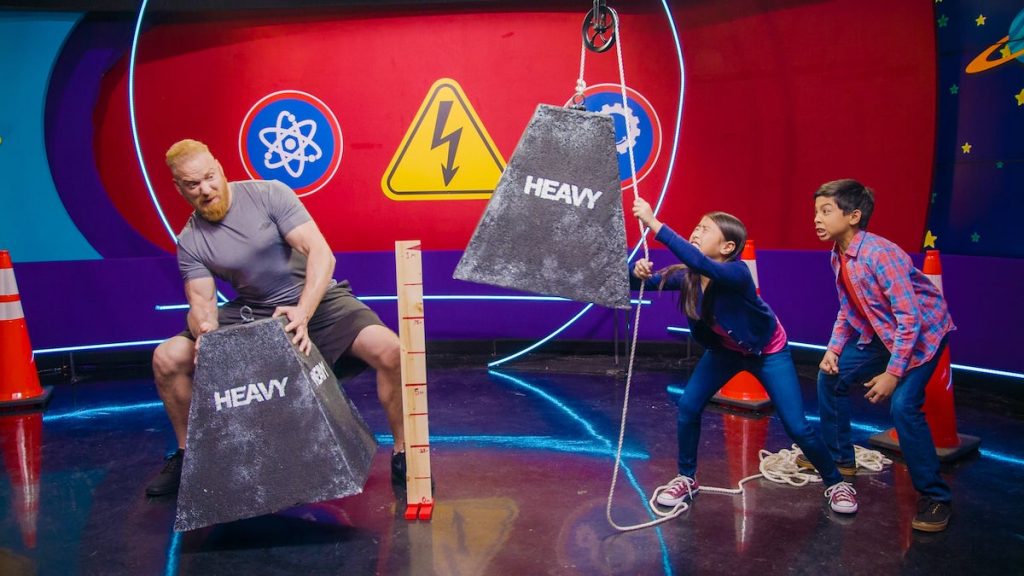
Simple machines make work easier. They have few or no moving parts and they work by changing the direction of a force or the amount of force needed to do something.
To better understand how simple machines work…
LET’S BREAK IT DOWN!
There are six different simple machines.
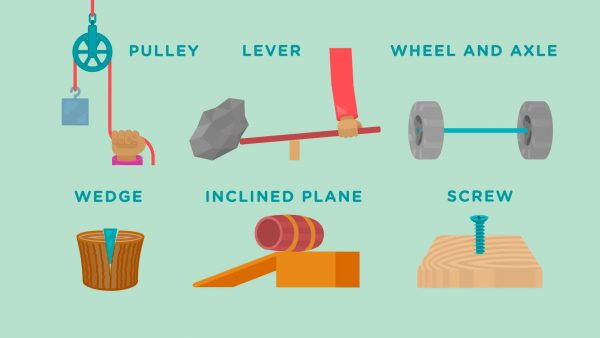
The six simple machines are the wedge, screw, lever, pulley, inclined plane and the wheel and axle. They all make work easier and have few or no moving parts.

A pulley can move things from a low area to a higher one.
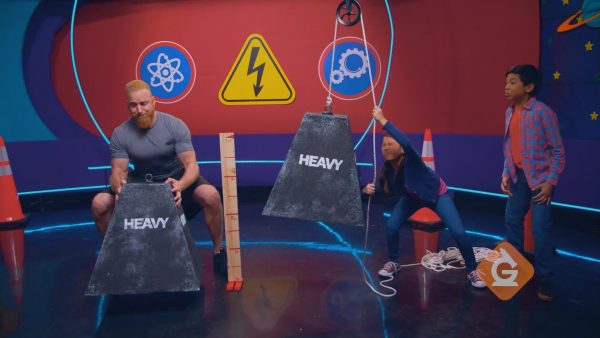
A pulley has a wheel that allows you to change the direction of a force. As you pull down on the rope, the wheel turns and whatever is attached to the other end goes up.

A lever helps move heavy objects.
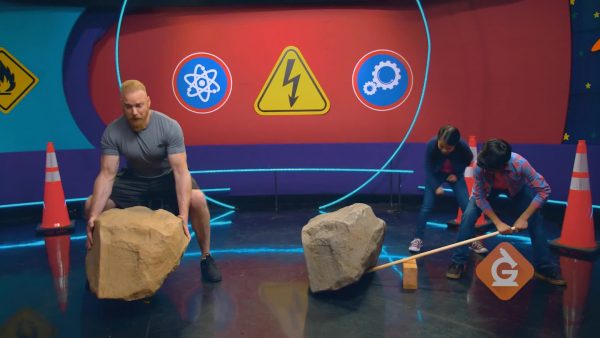
When you push down on one side of a lever, the other side goes up. Levers can also be used to lift heavy objects such as a rock or furniture. A seesaw is an example of a lever.

A wedge is a simple machine used to split material.
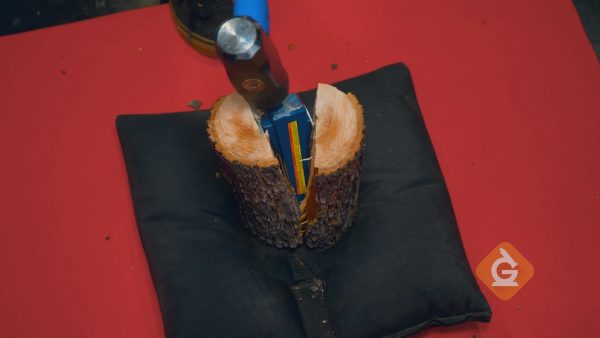
By placing the thin end of the wedge onto a log, you can hit it with a hammer. The wedge changes the direction of the force and it pushes the log apart.

An inclined plane can help you to move heavy objects.

It is easier to move heavy things up a ramp than it is to lift them straight up. A ramp is a common example of an inclined plane. It takes longer to go up one, but it is easier.

SIMPLE MACHINES VOCABULARY
SIMPLE MACHINES DISCUSSION QUESTIONS
Describe a simple machine.
Why are simple machines important?
How does a pulley help lift things?
How does a lever help move heavy objects?
How does the wheel and axle make it easier to move heavy objects?
What are some examples of using a wedge?
Skip, I will use a 3 day free trial
Enjoy your free 30 days trial
We use cookies to make your experience with this site better. By using this site you agree to our use of cookies. Click "Decline" to delete and block any non-essential cookies for this site on this specific property, device, and browser. Please read our privacy policy for more information on the cookies we use.Learn More
We use cookies to improve your experience. By using this site, you agree to our use of cookies. Click "Decline" to block non-essential cookies. See our privacy policy for details.Learn More





